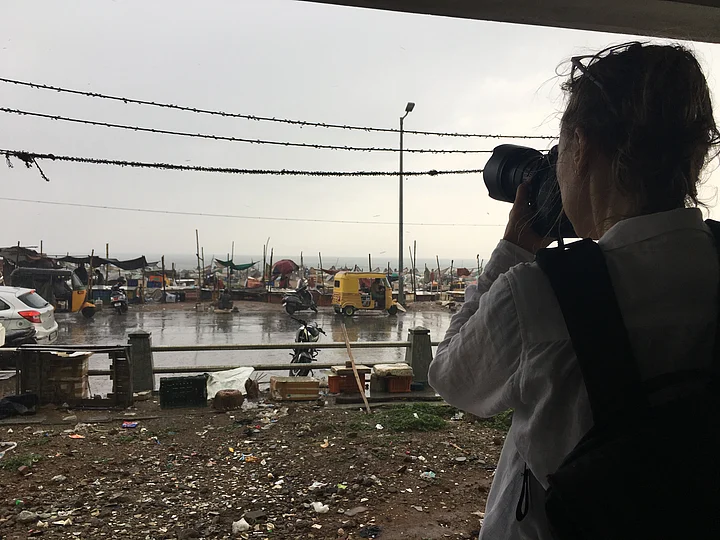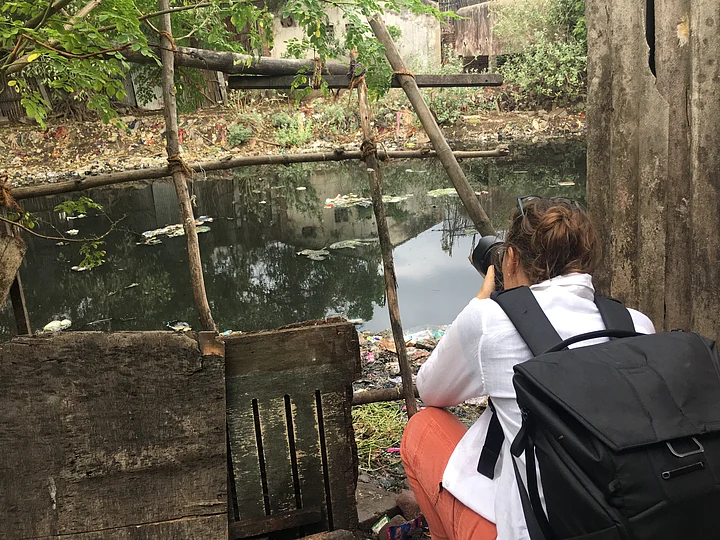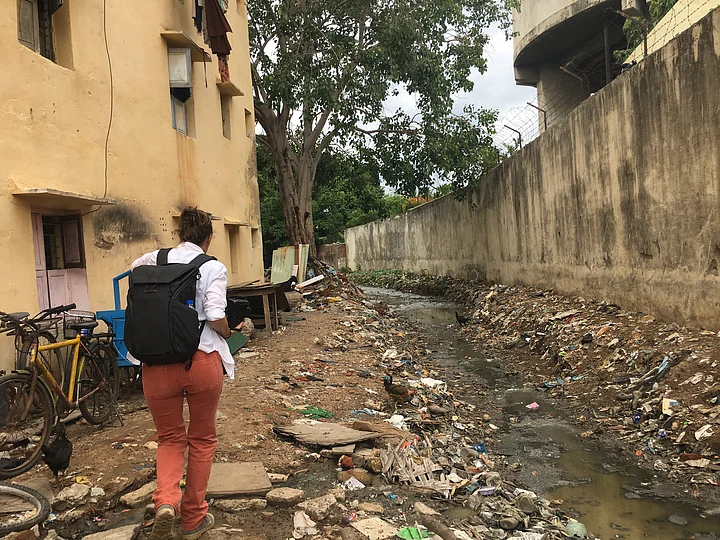My phone beeped and reminded me of an Instagram message I had missed. It was from a Dutch documentary photographer who was flying down to Chennai that weekend, to document the water crisis in the city.
Being a digital media journalist with an Instagram following nowhere near ‘influencer' levels, I was surprised to hear from someone from another part of the world, asking me to be her guide for the trip.
Feeling absolutely honoured, cruising through waterlogged roads, haggling with auto rickshaw drivers and playing hide-and-seek with the rain, I finally reached Kodambakkam High Road to put a face to this name.
Cynthia Van Elk, a Dutch photographer based in New York, has been working on a project called ‘Water as Leverage,’ funded by the Dutch government in association with United Nations. It aims at developing resilient, climate adaptable urban water projects for Chennai (India), Khulna (Bangladesh) and Semarang (Indonesia).
The team plans to devise water conservation techniques with Chennai’s existing water body ecosystem – the temple tanks and lakes. These water bodies are centuries old and are naturally interconnected.
This was Cynthia’s fourth visit to the city and her documentation of the water crisis has really helped the team understand the grim reality of the situation.
Before she came to India, she learnt about the extent of drought and water scarcity in Chennai through social media and a couple of New York Times articles. But, when she came to the city, she was in for a surprise.
“It’s definitely a very severe situation but I was expecting to see in my hotel signs that say, ‘Keep your baths short. We have a drought. We have a water crisis. Don’t let the tap run when you brush your teeth etc’... but there was nothing like that. It was as though it (water crisis) didn’t exist.”Cynthia Van Elk, Photographer
Chennai: The Good, The Bad and The Ironic
Stop 1: Kodambakkam High Road. A cluster of housing board complexes here are demanding that a tap be installed for every few houses. All this while they share a compound wall with the metrowater office, which houses one of the largest water tanks and several water lorries.
Stop 2: Mylapore. A nest of houses where on one side people have personal motors fixed in their houses that supply at least 4 buckets of water a day and, on the other, are people who live along a sewage line, that houses flies and heaps of garbage.
Stop 3: Nochi Kuppam, Marina Beach. Dingy housing complexes, houseflies swarming all over, every window overlooking the deep blue sea. While the men set out to sea to fish, the women spend hours carrying buckets of water from the entrance of the compound up several flights of stairs.
In every case, Cynthia was quick to point out the irony of it all.
‘When I show my photos, the reaction I get most often is disbelief... ‘how are people living here, how trash is just chucked in the canal with people living just right next to it’... it's really disheartening and, even for me, every time I come back and I go see these places... I never get used to it. I still feel pain in my stomach... how can this be? And people are so casual about it,” she said.
The Case of the Chennai ‘Boss Women’
Every time Cynthia posed a question, I realised how ‘casual’ we, as Indians, are about our struggles, adjustments and limitations.
Cynthia: ‘How can a woman carry 10 buckets of water through these winding streets?’
Woman at the hand pump: *laughs while balancing two buckets on her hips, cracking a joke and walks swiftly through the streets*
Cynthia: ‘If the water looks muddy or smells weird, do they chuck it or do they still use it as drinking water?’
Single mother checking if her borewell has any more water to provide: ‘Yeah. We will silt it and use the top half. Not that I can afford to buy drinking water cans apart from all these expenses.’
Cynthia: ‘These people live along a sewage river and they still toss their garbage in there. How do they manage to deal with mosquitoes and other insects?’
Women at the tea shop: ‘This is our home. Haha... the mosquitoes don’t bite us, they might do that to you foreigners.’
Following the interviews, Cynthia heaped praise on all the women who work, take care of children and effortlessly carry buckets of water, no matter what time the tanker arrives.
She asked if what we witnessed meant women were being treated as equals, as they deserved. I wished I could answer ‘yes.’
As we stood at the fishermen's hamlet in Nochi Kuppam, looking at some men pulling on the strings of their fishing nets, we began discussing other things besides the water crisis.
I told her about India's diversity, championed idli dosa against bread and Nutella, explained the all-pervasive caste system, and about Chennai's safe and warm environs, which, of course, differ from city to city.
Soon, I segued into talking about India’s ridiculous fascination with ‘white skin’ and even attempted to explain the mysterious ways in which horoscopes work, only to give up and circle back to discussing saapadu, or food.
As the rain subsided, I checked out of 'work mode'.
I had made my guest experience the underbelly of Indian life. It was time for redemption: I showed her the serene Besant Nagar beach, served her aromatic filter coffee, and made her taste spicy dahi papdi chaat, only to check if I could offer her molaga bajji, paani puri and vada pav.
The rains once again put a halt to our adventure, but there we stood, two women, from different countries, already planning our next dinner date – probably a three-course meal on a banana leaf.
(At The Quint, we question everything. Play an active role in shaping our journalism by becoming a member today.)


